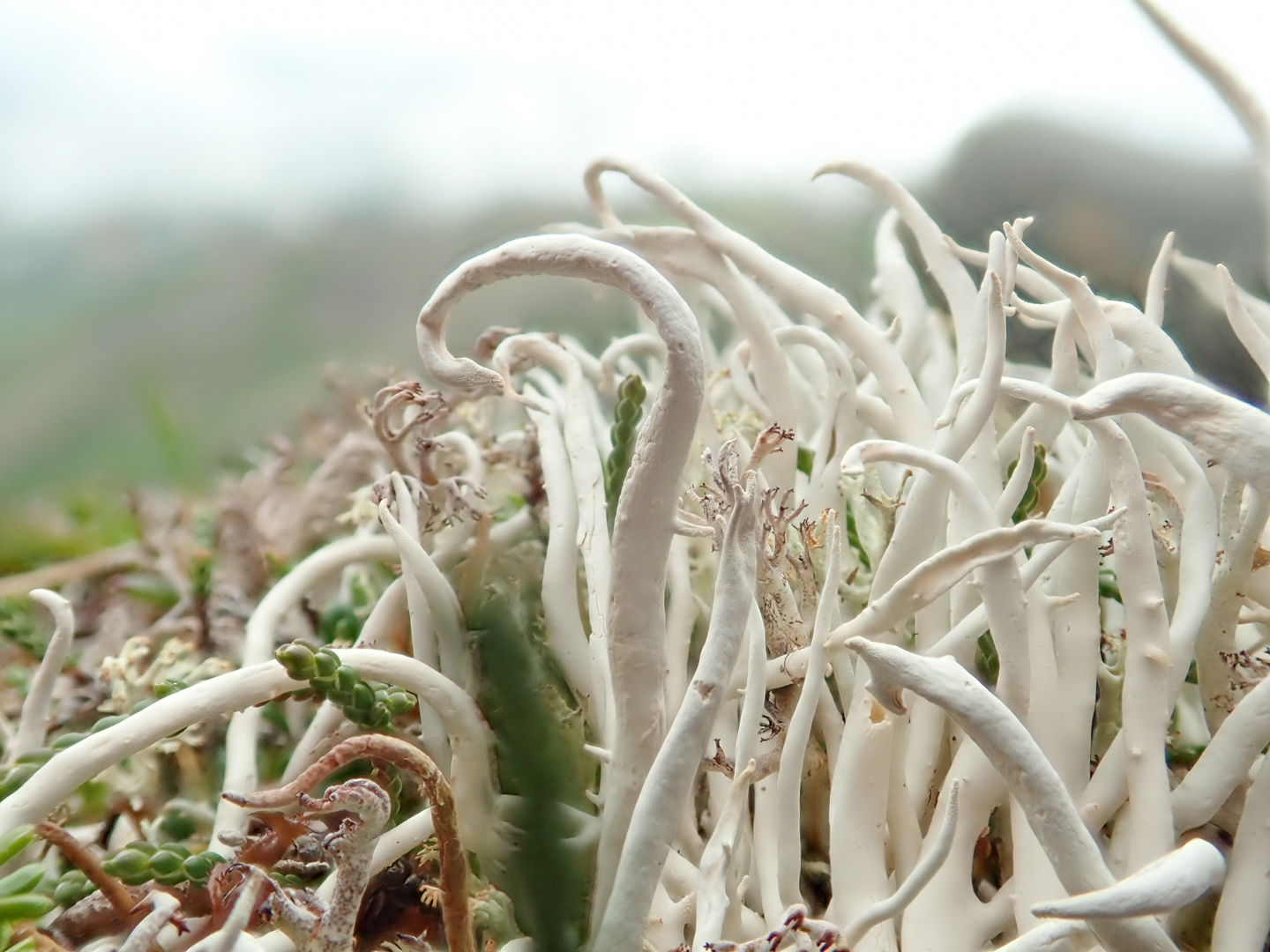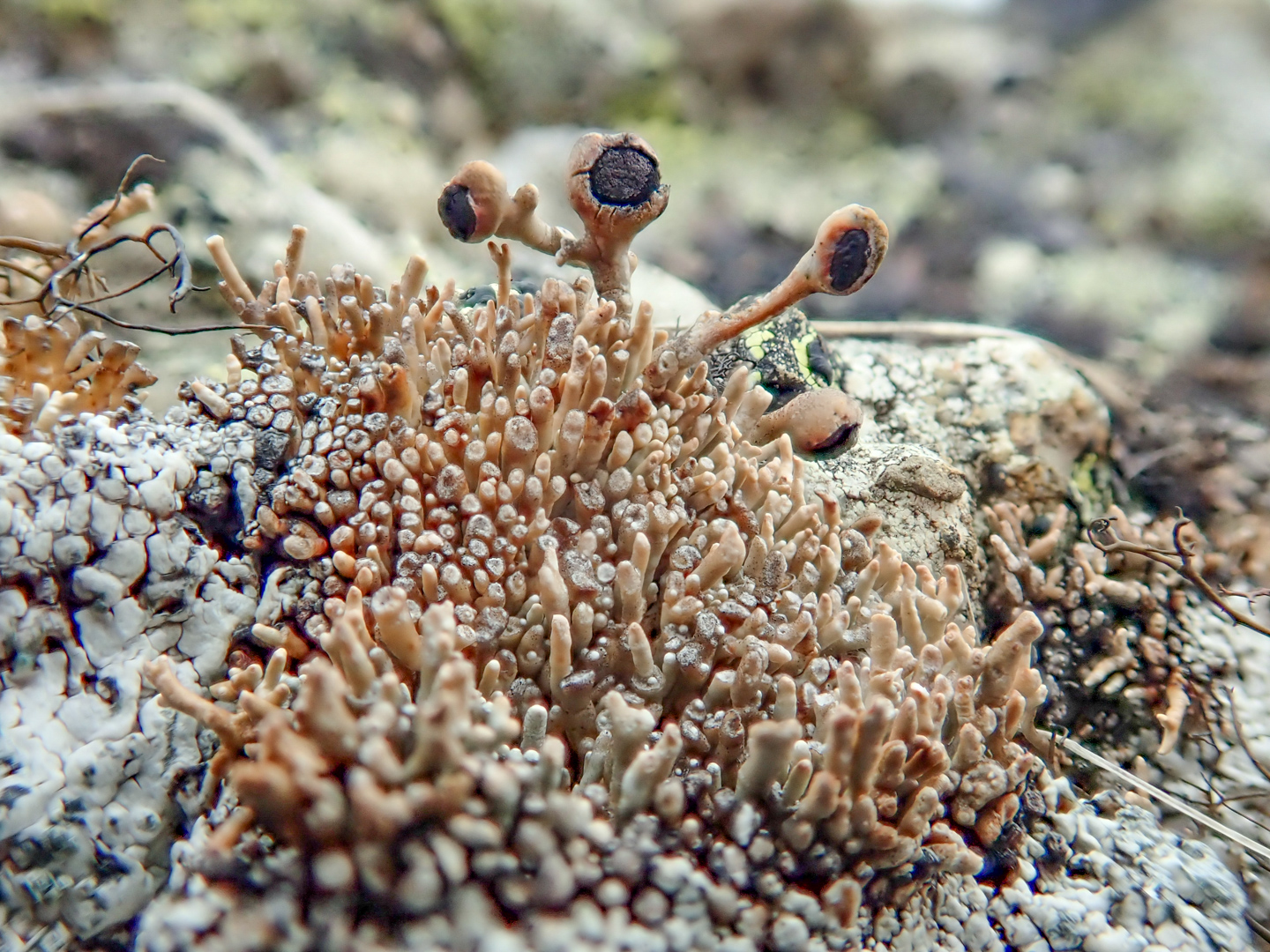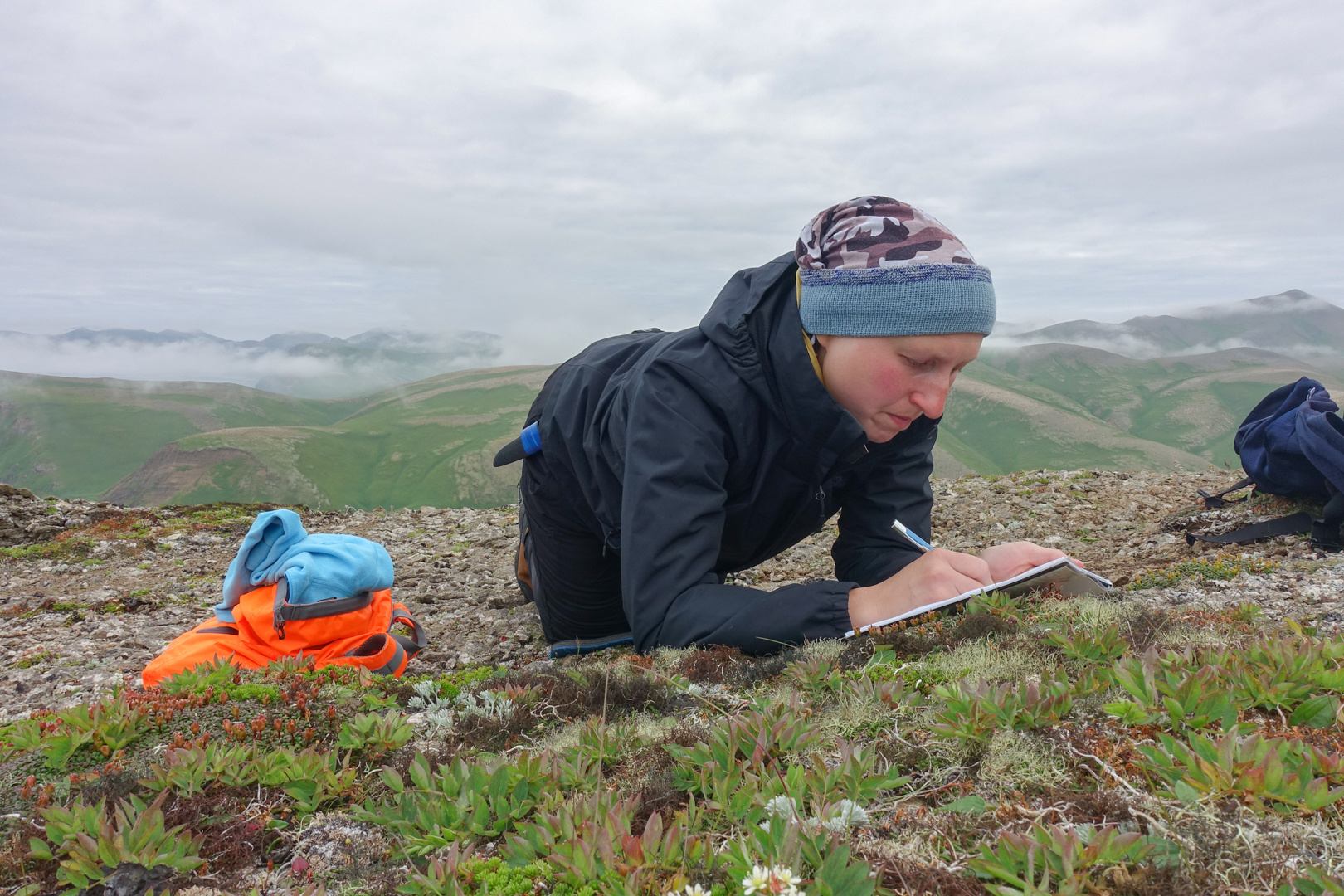Scientists from Komarov Botanic Institute and Saint-Petersburg State University have finished the first ever specificated research of lichen diversity on Medny Island. Within a month of work they travelled across mountainous tundras, river valleys and coasts and found over 160 species. A big portion of the collected samples is to be determined in laboratory.
“The most unusual on the islands is the absence of a whole number of species very common on the neighboring Kamchatka and other oceanic territories of the Far East,” shared Dmitry Gimelbrandt, lichenologist, research fellow of V.L.Komarov Botanic Institute and head teacher in Saint-Petersburg University. “For example, we haven’t found not a single species from Arctoparmelia genus. For some reason their spores did not come to Medny Island or did not survived local climate.”
His colleague Irina Stepanchikova shared his opinion: “Arctoparmelias are nearly everywhere in the North, where we see silicate rocks, and they are very prolific. On Medny Island there are a lot of silicates, but no lichens of this genus.”

Thamnolia vermicularis attacked by lichenophilic fungi. Photo by Irina Stepanchikova
It seems that we cannot explain this absence by an unlucky day. The researchers travelled by foot a large part of the island and analyzed lichen communities on the coasts, in tundras, on hills and mountains. Hans Trass did not manage to find Arctoparmelia either. He was a well-known soviet botanist of Estonian origin, who visited Medny Island for a short time in 1960 and collected some samples near Preobrazhenskaya village and the same named bay. It was the only source of scientific data about lichens on Medny Island before 2019. In 1960, the lichen collection of Medny Island included 80 samples and 57 species. Unfortunately, these findings were never published.

Sphaerophorus fragilis. Photo by Irina Stepanchikova
Meanwhile, researchers from Botanic Institute have already found 160 species and a third or half more to be determined in the lab. Roughly the lichen diversity of Medny Island may be about 200-240 species, which is even less abundant than a relatively poor lichen flora of Parapol Dale or Goven Cape in the North of Kamchatka (over 300 species).
According to Dmitry, some of the collected samples contain species, which have not been seen on Kamchatka. “We are about to discover how these lichens came to Medny. They are either common on the Kurils and Primorye region or on the Aleutians. For now we can only guess.”

Lichen community on the coastal rocks of Medny Island. Photo by Dmitry Gimelbrandt
Next year the researches will continue on Bering Island. They will compare lichen communities of the two islands and estimate how they adjust to the environment with reindeers and humans.

Irina Stepanchikova registers lichens on Medny Island
We know a little bit more about lichens of Bering Island. In 1879, the Vega Expedition headed by Adolf Erik Nordenskiold stopped on Bering Island. Swedish doctor and lichenologist Ernst Almquist participated in the expedition and made a collection of samples, which was later systematized by Wilhelm Nulander, the best-known lichenologist of the time. The collections included over 100 species and it is now stored in Sweden and Finland. The information about it is published. After that, nobody researched lichen communities of Bering Island.
.jpg)
Dmitry Gimelbrandt on Bering Island. Next year the lichen research will continue here.
The most characteristic species of lichens on the Commander Islands collected by the scientists will be exhibited in the museum of the nature reserve visitor center.
Lichens are a symbiosis of fungi and algae. These complex organisms are not plants, though they play a similar role in local ecosystem – they are the producers. Producers transform the energy of the Sun into organic matter using photosynthesis and become a source of food for animals.
They dominate the tundra, which is the major type of vegetation on the Commander Islands. These diverse and exquisite organisms have extravagant forms, colors and shades and sometimes form communities, which harbor numerous tiny invertebrates and serve as food for many other organisms. Moreover, they were one of the first to coma and make home a new and unknown environment, as they create soil on bare rocks. They create the environment for their more needy neighbors, such as plants and animals.









.jpg)
